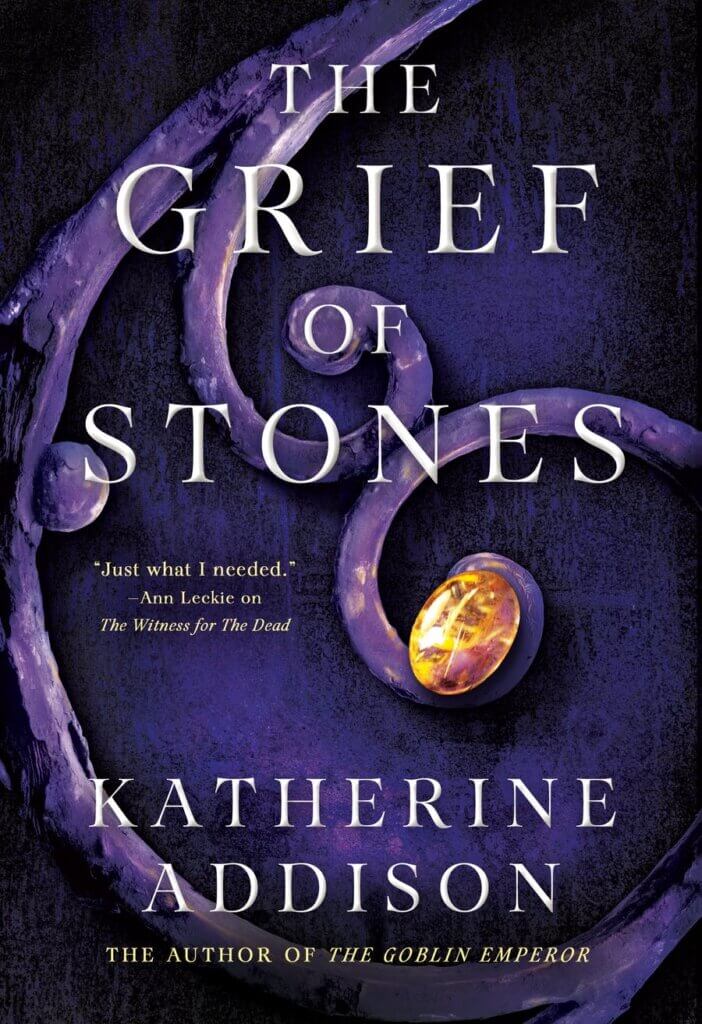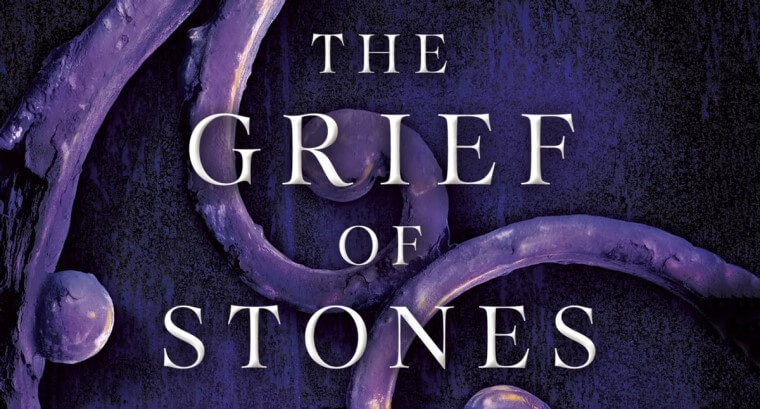The Grief of Stones by Katherine Addison is her latest mystery in the world of The Goblin Emperor. It follows The Witness for the Dead, presenting the Witness again solving murder mysteries and engaging in more derring-do than he, personally, wishes for. Slow-paced until a sudden action scene, the build has great pay off and I am extremely invested in what’s next for these characters.
The Grief of Stones
Katherine Addison
Tor Books
June 14, 2022
Early in the novel, Othala Celehar, Witness for the Dead, is entreated to investigate a cold case: an aristocratic woman who died suddenly three months ago, whose husband now suspects she was murdered. As part of that investigation, the Witness gets drawn into another, figuring out a situation at a boarding house for foundling girls with a possibly disreputable mistress.
The Grief of Stones has women as focal points — in addition to these women-focused investigations, Othala Celehar is presented with a surprise apprentice, in the form of an adult woman who has only recently discovered her ability to witness for the dead. Her character is an excellent addition to the world of the series, and more women in the prelacy are also present. Their competence and agency help offset the ways that the world of this series is casual about violence toward women. Celehar and his colleagues and allies are sad about the violence toward women, but to me, seem to be resigned rather than outraged.
The Grief of Stones offers readers features from several mystery subgenres in a fantasy setting, with elements of a procedural abutting hardboiled and cozy elements. The Witness sits in his office until called on by a petitioner, which feels like a private investigator, and then Addison emphasizes things like the time and energy required to take a three-leg journey on public transit across the city, and our point-of-view character always makes sure to tell us, cozily, what kind of tea he’s drinking, whether the soup has sausage in it, which jacket he’s wearing. It’s a nice mélange.
As with The Goblin Emperor and The Witness for the Dead, much of the pleasure in The Grief of Stones comes from Addison’s world-building. The communal atmosphere of the city is really rich. It feels lived in, and the procedural and cozy elements paint a clear picture of how life goes in this world. For instance, when Celehar wishes to interview a particular person, he knows roughly where an aristocratic family lives and knocks on doors there until he gets the right place. Another time he’s out having dinner at a restaurant when an official stops by and requests his services. This is a city where life is lived publicly, and people are findable in their spheres.
Notably, The Grief of Stones doesn’t attempt to stand alone. The book starts out with a scene that feels like a coda to The Witness for the Dead and throughout, characters and incidents from Witness for the Dead are not reintroduced but rather picked up where we left off. The gentle slow burn possible romance with the Opera director continues to smolder gently. In fact, this book feels like a middle chapter, as there is set up at the end for what will come in the next book in the series. While I enjoyed it very much, I would not recommend it without reading The Witness to the Dead first.
In an evolution from The Witness for the Dead, however, I found The Grief of Stones to be more self aware and consciously fun that its predecessor. Even though Celehar himself is all lugubrious dignity, he has clear allies and they’re engaging and willing to have fun. One aspect of the plot hinges incredibly on disreputable photographers, which I found to be an amazing touch, and the book contains the immortal question “what did one wear to break into a foundling school?” I laughed aloud.
This is, as advertised, a book about grief — Celehar grieves, and so do his petitioners, each one bereaved — but it is also a book about value. Who is valued? For what? As the Witness for the Dead investigates the circumstances of various deaths, these questions come up time and again.
Like The Witness for the Dead, The Grief of Stones is remarkable for its compassion. Celehar attempts to do right for those around him, and so do the people he encounters. The world gets richer with each installment in the series, and Celehar’s place in the community gets more established. I look forward to what the next book will bring.

